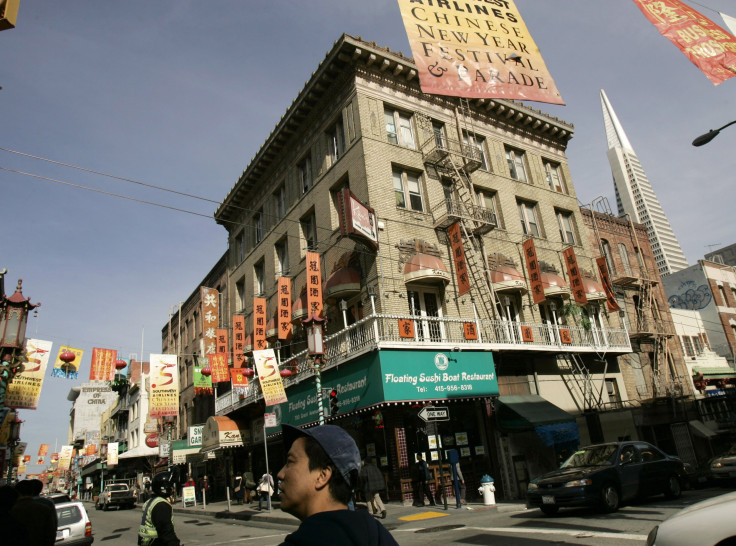What If Asian-Americans Formed Their Own Country?

Asian-Americans comprise not only the fastest-growing minority group in the U.S., but also the wealthiest, most accomplished and educated segment of the population -- marking an extraordinary historic evolution in this country.
According to a report released by the Nielsen Co. late last year, Asian-Americans, as a whole, enjoy an annual aggregate purchasing power of some $718 billion -- and this figure could climb to $1 trillion within only five years. Thus, given that U.S. total GDP amounts to some $15 trillion; it is reasonable to suggest that Asian-Americans represent a crucial -- and ever more important -- part of the world's biggest economy.
The Asian-American community, now accounting for about 6 percent of the total U.S. population, has an aggregate economic clout that far surpasses its relatively small numerical strength. Now, imagine -- hypothetically, of course -- if Asian-Americans formed their own separate country. Let's call this mythical land “Asiana.”
Asiana would have a population of a little more than 18 million (about the size of Romania), having surged by some 50 percent since the beginning of the century. The “country's” population is expected to reach 20.9 million in the next five years. Indeed, based on purchasing power, Asiana would have the world’s 18th-largest economy, with a GDP that would fall between economic powerhouses Turkey and Switzerland.
The natives of Asiana are also highly educated and well-compensated – median annual household income ($66,000) is 28 percent higher than that of the U.S. as a whole ($49,800). [Moreover, Asiana's median annual household income is higher than all individual states except Maryland, Alaska, New Jersey and Connecticut.] In terms of median household wealth, Asiana ($83,500) soundly crushes the U.S. ($68,529).
Not surprisingly, Asianans are deeply committed to higher education. About one-half of the adults aged 25 or above in Asiana have at least a bachelor’s degree (almost double the 28 percent figure for the U.S.). Only the Russian Federation, at 54 percent, has a higher proportion of college graduates, according to the Organisation for Economic and Cooperative Development.
The people of Asiana are also firmly committed to family values: 59 percent of adults are married (versus 51 percent for the U.S.) and only 16 percent of Asianan babies are born to an unmarried mother (versus 41 percent for U.S.). In addition, 80 percent of Asiana's children live with both parents (63 percent for U.S.).
Asiana is highly diverse – the six largest segments comprise the Chinese (23 percent), Filipinos (20 percent), Indians (18 percent), Vietnamese (10 percent), Koreans (10 percent) and Japanese (7.5 percent).
Almost three-fifths (58 percent) of Asianans own their own home, and only about 12 percent live in poverty. More than one-quarter (28 percent) of Asiana households have annual incomes greater than $100,000, versus 18 percent for the U.S.
According to a survey by the Pew Research Center, the people of Asiana are also quite a happy lot.” They are more satisfied than [Americans as a whole] with their lives, finances … and they place more value than … Americans do on marriage, parenthood, hard work and career success.”
Religious diversity is also a hallmark of Asiana -- 22 percent of the population is Protestant, 19 percent are Catholic, 14 percent are Buddhist, 10 percent are Hindu, 4 percent are Muslim and 1 percent is Sikh. More than one-fourth (26 percent) have no religious affiliations.
However, Asiana is in a state of great flux -- almost three-quarters (74 percent) of Asiana’s adults were born overseas; and of these, about one-half speak English very well and the other half do not. Thus, it is unclear what Asiana’s national language would be.
In addition, Asiana society is highly stratified. Japanese, Chinese, Indians and Koreans tend to form the “upper classes” with higher levels of education and social mobility, while Cambodians, Laotians, Hmong, and Filipinos struggle. For example, 70 percent of Indian adults have a college degree – for Vietnamese, the figure is only 25 percent. It is reasonable to assume that Asiana’s political and corporate elite would be dominated by Chinese, Japanese, Koreans and Indians in a possibly uneasy alliance.
Moreover, while Asiana enjoys a very low rate of violent crime, that assessment is somewhat misleading, since organized crime and gangs have deeply infested many communities.
On a brighter note, Asianans are also highly engaged in high-speed Internet access and mobile connectivity via usage of cell phones, laptops and wireless networks. With a 70 percent smartphone penetration, Asianans enjoy the world's second highest such rate, behind only super city-state, Singapore, at 90 percent, according to Wired.com.
All told, Asiana would be one of the world's most peaceful, prosperous, but perhaps very divided, nations on earth.
© Copyright IBTimes 2025. All rights reserved.





















